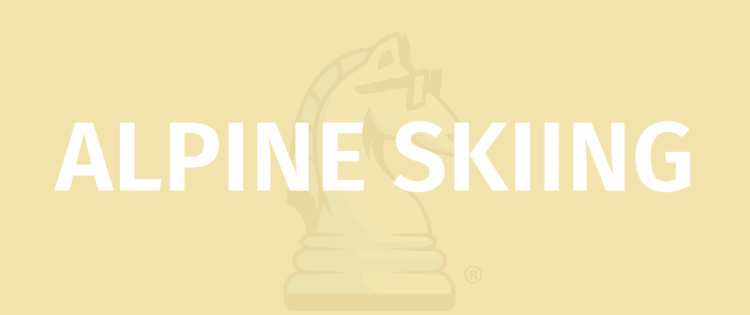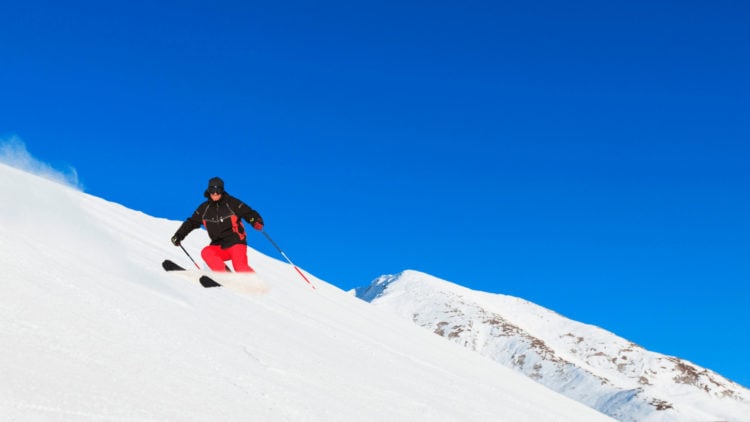
OBJECTIVE OF ALPINE SKIING: Ski downhill to reach the finish line in the least amount of time possible.
NUMBER OF PLAYERS: 1+ player(s)
MATERIALS: Skis, heel bindings, ski boots, ski poles, helmet/protective gear
TYPE OF GAME: Sport
AUDIENCE: 5+
OVERVIEW OF ALPINE SKIING
Alpine skiing is the all-encompassing term for all downhill ski sports, the most popular of which include: Downhill, Slalom, Giant Slalom, and Super-G. Each of these ski disciplines features a requirement for extreme speed and miraculous control, often resulting in some serious mishaps and tight finishes!
SETUP

Alpine skiing events utilize a well-designed downhill course of snow outfitted with alternating blue and red gates, the number and layout of which are dependent on the event.
Downhill, Giant Slalom, and Super-G only use regular horizontal gates. Slalom, however, utilizes both horizontal and vertical gates, with vertical gates forcing the skier to move laterally on the hill rather than solely focusing on downhill movement.
GAMEPLAY

The four major alpine skiing disciplines (Slalom varieties and Downhill) all require competitors to reach a finish line in as little time as possible while passing through each gate on the course. If a skier misses a gate, they will either be disqualified or given a time penalty (usually only applies for normal Slalom). To successfully pass through a gate, both skis of the competitor must be within the gate.
Each alpine skiing event is a solo event, with each competitor competing individually. Therefore, only one skier is allowed on the course at any given time.
DOWNHILL
Downhill is the most popular alpine skiing event, likely because skiers have been seen to regularly hit speeds up to 100 mph! These fast speeds result from requiring few turns, as gates are very far apart and primarily act as shortcut deterrents.
A unique feature of Downhill skiing is the occasional inclusion of jumps, an element that is absent in any Slalom events. Additionally, competitors have a single run in Downhill rather than the multiple combined runs seen with Slalom competitions.
SLALOM
Slalom is the most technical alpine skiing event. This is the one competition that utilizes vertical gates, forcing skiers to be constantly shifting back and forth while moving downhill.
GIANT SLALOM
Giant Slalom features only horizontal gates spaced further apart than in traditional Slalom. With this increased distance (and width between gate poles), competitors are encouraged to move much faster, although side-to-side maneuverability is still essential.
SUPER-G
Super-G, short for “Super Giant Slalom,” is incredibly similar to Giant Slalom, although the gates are spaced even farther apart. As expected, this results in competitors achieving far quicker speeds and allowing for wider turns.
END OF GAME
All alpine skiing events are time-based, meaning the skier who reaches the finish line in the least amount of time (without committing any gate infractions) achieves first place.
- 30 GAMES TO PLAY OVER TEXT - April 22, 2024
- 20+ FREE PRINTABLE BABY SHOWER GAMES - April 16, 2024
- 20+ College Party Games for the Best Night Ever! - April 2, 2024